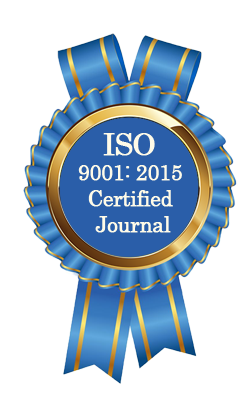| All | Since 2020 | |
| Citation | 105 | 60 |
| h-index | 4 | 4 |
| i10-index | 3 | 2 |
WJAHR Citation 
Login
News & Updation
Best Article Awards
World Journal of Advance Healthcare Research (WJAHR) is giving Best Article Award in every Issue for Best Article and Issue Certificate of Appreciation to the Authors to promote research activity of scholar.
Best Article of current issue
Download Article : Click here
Indexing
Abstract
PREDICTORS OF IN-HOSPITAL MORTALITY OF BURNS IN BASRAH
*Mayada Abdulmunim Hasan, Hiba Saleh Abbood and Siham Oudah Warid
ABSTRACT
Background: Burn injuries are a significant public health concern, particularly in low-resource settings, with highmorbidity and mortality rates. Understanding the demographic and clinical predictors of burn-related mortality iscrucial to inform prevention strategies and improve healthcare responses. Aim: This study aimed to identify thepredictors of in-hospital mortality among burn patients admitted to the burn unit in Basrah during the year 2010.Methods: A retrospective descriptive hospital-based study was conducted using medical records of all burnpatients admitted in 2010. Data collected included sociodemographic factors (age, sex, marital status, educationallevel, occupation), burn characteristics (type, degree, total body surface area [TBSA%] affected), time to hospitaladmission, and time of admission. Frequencies and distributions of variables were analyzed to identify patternsrelated to mortality. Results: A total of 343 burn patients were admitted. Children under 15 years comprised thelargest age group (31%), and females constituted 54.8% of cases. Most patients were non-employed, married, andhad a low educational level. Over half of the burns occurred during winter and spring. Flame burns (80%),second-degree burns (58%), and TBSA involvement of 26–50% (30%) were most common. Notably, 58% ofpatients died in hospital, with higher mortality in females (67%), individuals aged 15–24 years (60%), and thosewith third-degree burns (95%). Mortality was also higher among patients with TBSA >50%, delayed hospitalarrival (>1 hour), and those admitted during off-hours (14:00–7:59). Conclusion: Women, children, andsocioeconomically disadvantaged individuals were more vulnerable to burn injuries. Flame burns, greater burnseverity, and delayed care were key predictors of mortality. Regional strategies for prevention and improved burncare services in Basrah are urgently needed.
[Full Text Article] [Download Certificate]
